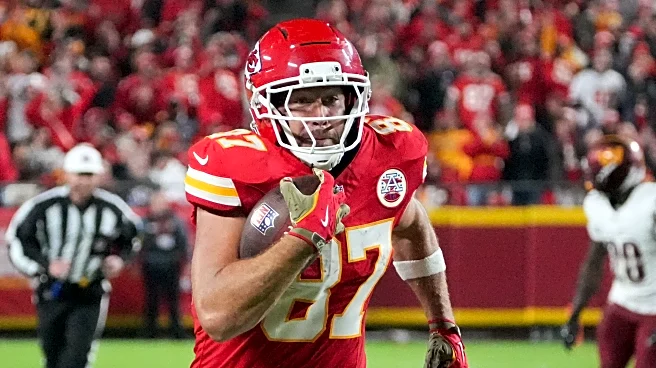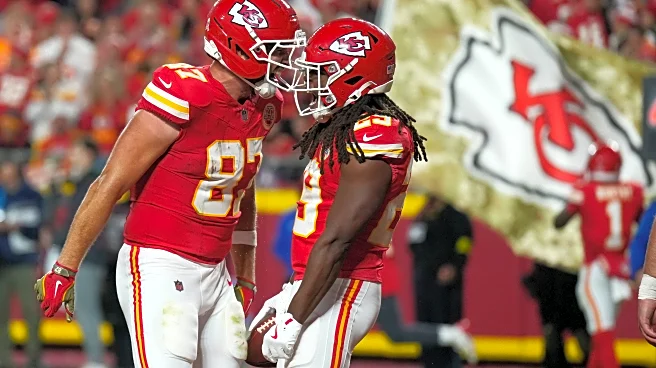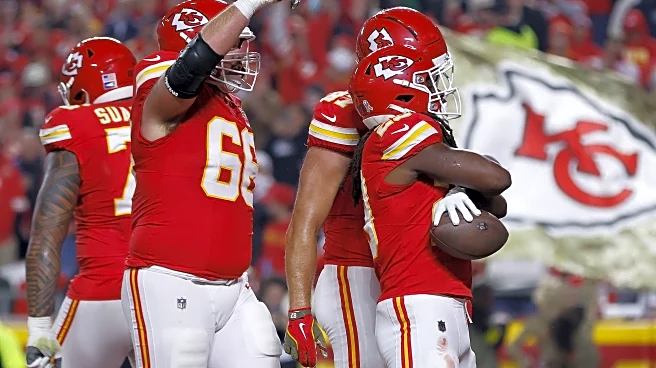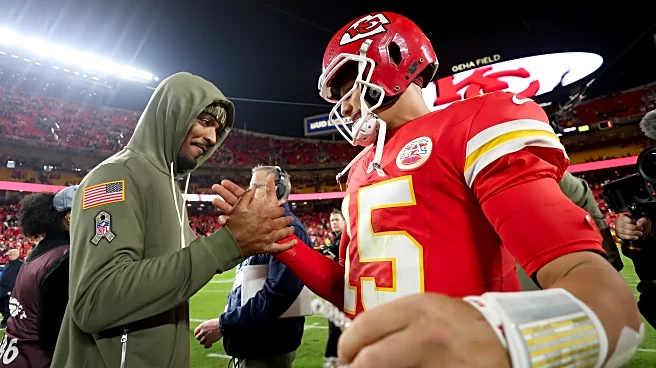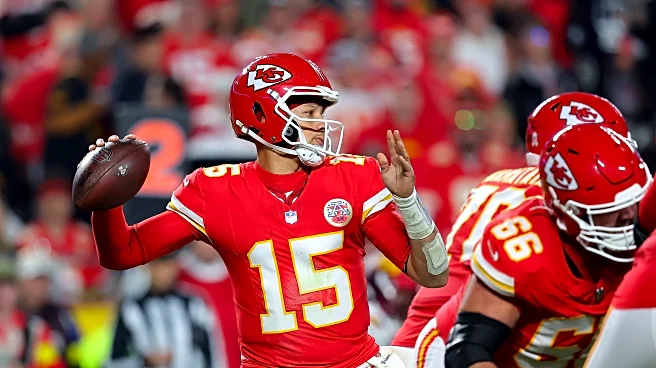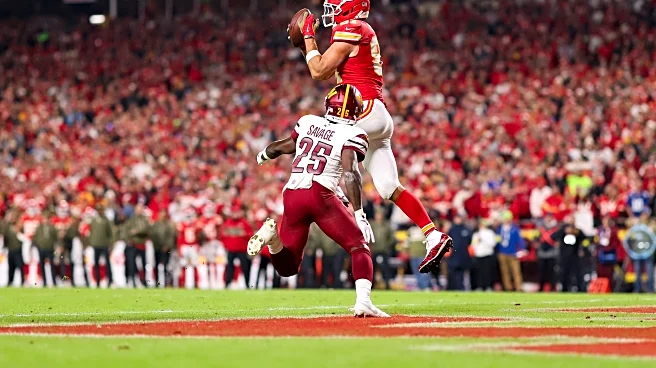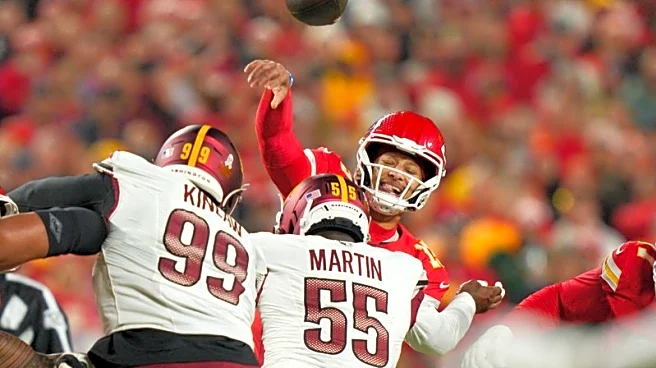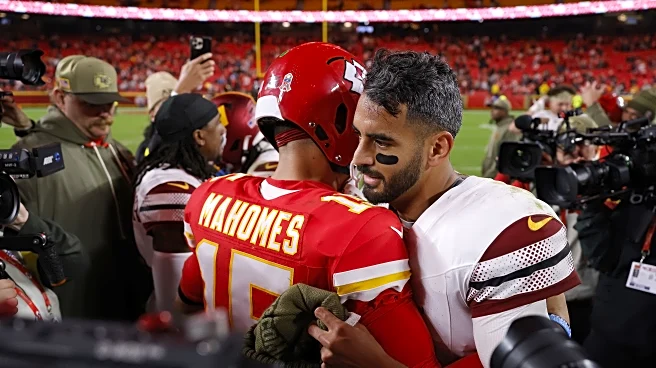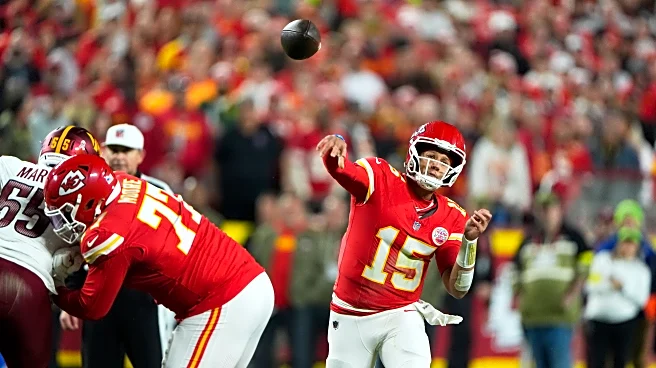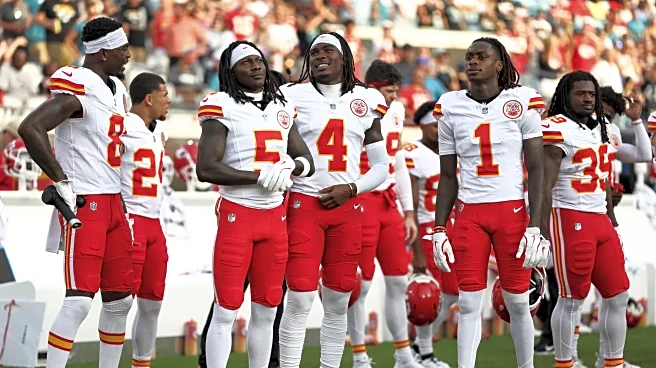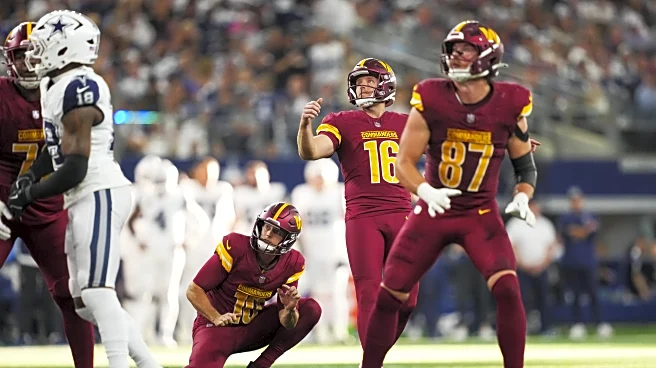In Monday night’s 28-7 win over the Washington Commanders, the Kansas City Chiefs’ three longest plays went for 38, 31, and 27 yards. All three shared one thing in common: each came off a play-action concept.
This has been something head coach Andy Reid has mixed into the offense more often in 2025 — and it’s smart.
Let’s see how Kansas City used it this week to create explosive plays against Washington.
Film evaluation
On the opening drive, the Chiefs scripted a really nice play to get wide receiver Xavier Worthy open down the sideline.
Kansas City comes out in 12 personnel, putting one tight end on each side of the offensive line in a 2-by-2 look. The Chiefs go under center, prompting the Commanders to walk a safety down to get an extra defender into the box. They motion Worthy across the formation, which forces the defense to shift and rotate. After the play fake, Worthy gets a free release on a wheel route down the sideline.
The Commanders are in Cover 3. The boundary cornerback covering wide receiver Rashee Rice is put into conflict, causing him to shift over to pick up Rice as he moves inside, which stresses the flat defender to bail back and cover any wheel route. The flat defender is held by the running back leaking into the flat — and the safety can’t get the angle before quarterback Patrick Mahomes rips this pass to Worthy for a huge gain.
This is a great example of using motion to confuse defenders — and putting the boundary corner or flat defender into conflict. If the corner had stayed in his third of the field, Rice would’ve found space one-on-one against a linebacker on a whip route — another potential big gain.
This time, the Chiefs line up in shotgun — which is a harder alignment from which to run play-action; there are only certain runs that can be faked from shotgun, so defenses are less likely to bite. So sometimes, teams use a “half-roll,” where the quarterback rolls slightly before flipping his hips back to the opposite side of the field.
The Chiefs do that here — and it gets the Commanders’ linebackers to bite forward toward the run. By the time they recognize the pass, it is too late to re-route tight end Travis Kelce — or run with him.
The Commanders are again in Cover 3, and the Chiefs create space by running Worthy on a skinny post and Tyquan Thornton on a deep post. That clears out the deep defenders, leaving a wide-open window for Kelce.
The key to play-action is selling the run. If all your offensive linemen immediately pop up into pass protection, the defense won’t be fooled — and your quarterback has to sell the fake while delaying his read. The line has to sell a run block, which usually means sliding together in one direction.
That slide leaves backside defenders unblocked, so teams typically use six or seven players in protection. It helps block the play up, but limits you to three or four receivers in the route.
That’s what happens on this play. The Commanders switch to man coverage. Two defenders run with Worthy, and no one else immediately gets open.
But because Kansas City protects the play so well, Mahomes has time to stay patient. That allows Kelce to leak into the flat, completely uncovered. Since Kelce has been in to block, Washington’s defenders lose track of him — a common occurrence when tight ends stay in protection before releasing. Their eyes get lazy, and Kelce makes them pay with another big chunk.
The bottom line
Play-action is a perfect fit for Kansas City’s personnel.
As we saw in this game, the Chiefs’ pass-catchers still struggle against press coverage. They thrive versus zone, but when opponents jam Kansas City’s smaller wideouts, separation becomes an issue. In particular, Hollywood Brown struggles in those situations — and on Monday, Worthy also lost a contested catch against man coverage on a dig route. At this stage of his career, Kelce isn’t as dominant against man coverage, either.
But using more play-action forces defenses into more base zone looks — or manipulates them with fakes and motion. Getting into 12 personnel or condensed sets can give receivers free releases. You can leak players to the back side as defenders chase the action. This makes their jobs easier — and gives them built-in answers against man coverage.
Here’s the other advantage: Kansas City’s running backs are far better running from under-center alignments. Both Kareem Hunt and Isiah Pacheco are one-cut, north-south runners. Going under center makes their tracks cleaner and enhances that style. Replacing more RPOs with true under-center play action can not only improve the ground game, but also generate more explosive throws over the middle — rather than quick sideline passes.
Finally, the Chiefs’ offensive line is athletic enough to run outside zone effectively. This complements play-action perfectly. They can mix in power looks, too, but that full-slide movement really displaces defenders — and sells the run.
As the season continues, I’d love to see even more of this. Kansas City has all the pieces it needs to be a fantastic under-center offense. Reid just needs to lean into it — and we’re seeing encouraging signs that this is just what he’s doing.
